Remembering Arthur Ashe: Champion, Activist, Historian and Humanitarian
In 1975, Ashe became the first black man to win Wimbledon. This July 10 marks what would have been Ashe's 81st birthday. Courtside Coffee remembers Ashe the way he wished to be remembered.
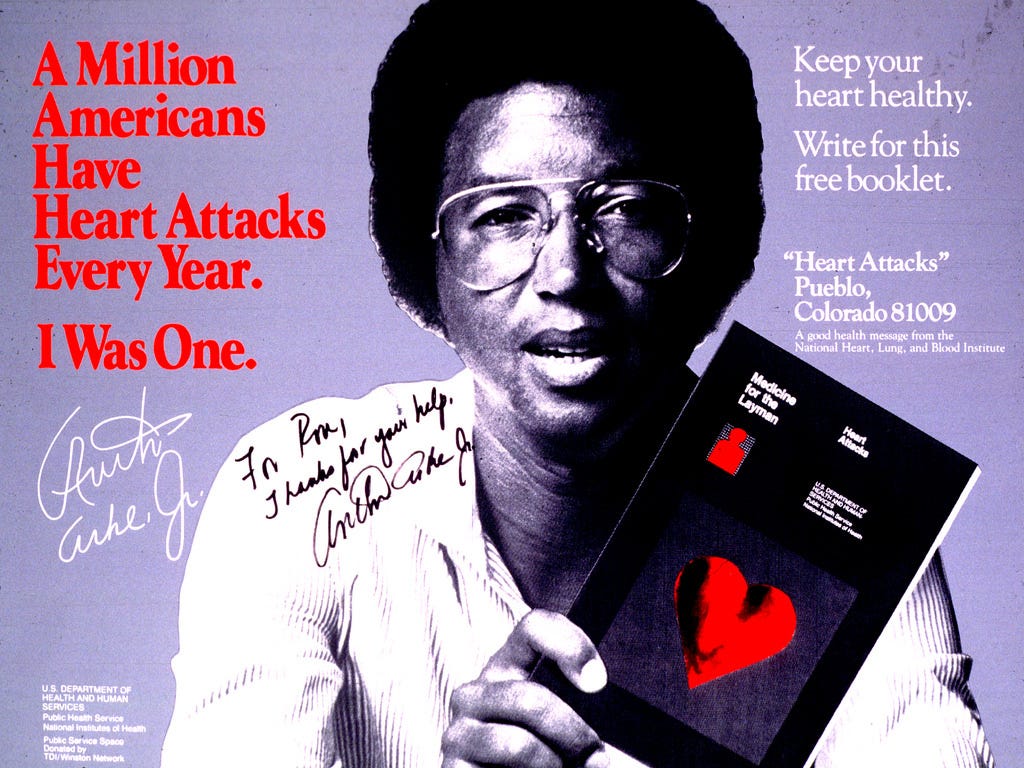
When people think of Arthur Ashe, they often remember the soft-spoken humanitarian who battled AIDS toward the end of his life. Many tennis fans know his name because it’s been memorialized at Arthur Ashe Stadium, the largest tennis-specific stadium in the world.
Ashe was so much more than a sports star. He evolved from a barrier-breaking tennis champion to an organizer, activist, historian, and humanitarian.
Ashe and Connors Fued on Court and in Court
In 1975, Ashe pulled off an epic upset over Jimmy Connors to win Wimbledon. Ashe and Connors were more than tennis rivals. They couldn’t stand each other, and before their Wimbledon showdown, Connors had sued Ashe twice.
Connors filed the first lawsuit in 1974 when Ashe was elected president of the newly formed Association of Tennis Players (ATP).
Connors refused to join the ATP and continued playing at tournaments as a member of World Team Tennis, collecting cash while ATP players sometimes boycotted events in solidarity.
In agreement with the European Slams, the ATP banned non-ATP players from tournaments. Connors joined the WTT in a lawsuit against ATP executives, which included Ashe.
In a letter to ATP members, Ashe called Connors arrogant and unpatriotic. The letter went public, and two days before Wimbledon began, Connors sued Ashe again, this time for libel.
Unpatriotic?
Ashe was the first black man to represent the United States in the Davis Cup, the international team event, the tennis version of soccer’s World Cup. Ashe also served in the army and took pride in representing his country.
Here was Ashe, the descendant of slaves and military vet, proudly playing for the country while Connors felt free to blow America off. This irked Ashe.
Ashe took to Centre Court wearing his Davis Cup USA red, white, and blue sweater. Connors strolled in wearing the colors of Italy’s flag in an outfit by Italian designer Sergio Tacchini.
Ashe, a week from turning 32, entered the match 0-3 against Connors, the 22-year-old defending champion. Ashe knew he had to do something drastically different. So he devised a game plan to give Connors “nothing but junk.”
Poised with patience, Ashe sliced, diced, chipped, and lobbed. Connors grew frustrated as Ashe defeated him 6–1, 6–1, 5–7, 6–4.
Ashe rises from segregation to local hero
Ashe grew up in segregated Richmond. July 10, 1996, three years after his death and on what would have been his 53rd birthday, the city of Richmond unveiled a statue of Ashe on Monument Avenue, a street lined with tributes to Confederate generals, including General Lee.
Black and white folks disliked the idea of the statue standing on Monument Avenue. Some whites didn’t want this black man immortalized alongside their Confederate heroes. Some black folks didn’t want Ashe’s statue associated with a who’s who of Richmond racists.
Wrote Sports Illustrated’s Stanley Kay, “And no place reinforced the racial hierarchy of the city like Monument Avenue. Within the 1 ½ -mile historic district of this tree-lined residential street, long a desirable residential address for wealthy Richmonders, stood five monuments to men who fought to keep Ashe’s ancestors enslaved.”
“The question changed from why put Arthur Ashe on Monument Avenue to why shouldn't we put Arthur Ashe on Monument Avenue? He's a modern-day hero, born and bred in Richmond, Virginia,” said Paul Dipasquale, the sculptor who designed the Ashe monument. “Why wouldn't we put him on Monument Avenue to honor this man and update Monument Avenue?”
After the George Floyd protests in 2021, the Confederate monuments came down. All that remains is Ashe.
Dipasquale spoke with Ashe a few weeks before his death. They were exchanging ideas about the monument. In a mini-documentary by Grotto Network, Dipasquale said he asked Ashe how he wanted to be remembered.
"I would like children to be involved in some way, either one child or several children; children are our future,” Ashe told Dipasquale. "I want books to be showcased. I want the message to be that knowledge is power. And my shoelaces would be untied — And I suppose a tennis racket should be in there somewhere.”
“And a tennis racket should be in there somewhere,” epitomizes how Ashe’s focus moved beyond tennis courts to more pressing matters.
After tennis, Ashe fought for several causes. He suffered a heart attack in 1979 and became an advocate for heart health, doing ads for the US Health Department. In 1985, he was arrested during a demonstration in front of the South African embassy in Washington, D.C. as part of an anti-apartheid movement. Ashe was arrested again in 1992 outside the White House, protesting the mistreatment of Haitian refugees.
Ashe was also a sports historian. He wrote “A Hard Road to Glory: A History of the African-American Athlete,” a three-volume encyclopedia of the history of African Americans in sports.
The publisher later released paperback books based on specific sports. I was privileged to write the foreword for the “A Hard Road to Glory: Track and Field” edition.
The Day Arthur Ashe Died
I remember the evening I learned that Ashe had died. I was working at Sports Illustrated, a magazine with writers all over the world. However, the central staff worked at the Time-Life Building at Rockefeller Plaza in Manhattan.
Before joining SI, I’d only worked in newspapers with hundreds of staffers. Sports Illustrated’s Manhattan staff was like family. We shared catered Sunday suppers in the conference room. Occasionally, we’d go on these “field trips.” Sometimes, we’d go out of town, like the weekend field trip to Boston to watch the Red Sox.
On Saturday evening, Feb. 6, 1993, we were at Madison Square Garden for the Riddick Bowe vs. Michael Dokes boxing match. This was before cell phones or social media, so nobody could text or email breaking news.
But somehow, SI’s legendary editor, Mark Mulvoy, got the news. He was sitting a couple of rows above me. I began to hear whispers. This got my attention. I turned around and looked up in time to hear Mulvoy say, “Arthur Ashe died.”
I turned back, faced forward in my seat, and cried.
Ashe, 49, died from pneumonia, a complication of AIDS, at New York Presbyterian Hospital, less than ten miles from Madison Square Garden.
The following day, we began working on the cover story. Ashe had recently been named Sports Illustrated’s 1992 Sportsman of the Year. The photo from that cover would later be used for the Arthur Ashe stamp.
We worked feverishly on the tribute issue, which came out that Monday. The date on the cover says Feb. 15, but back then, when SI was a weekly, the magazine hit stands a week before its publication date.
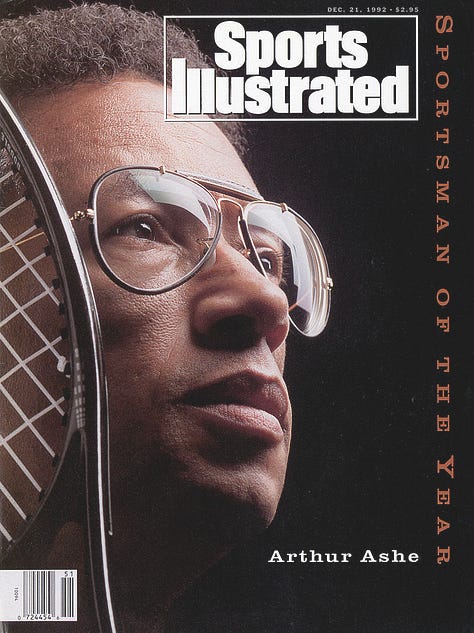
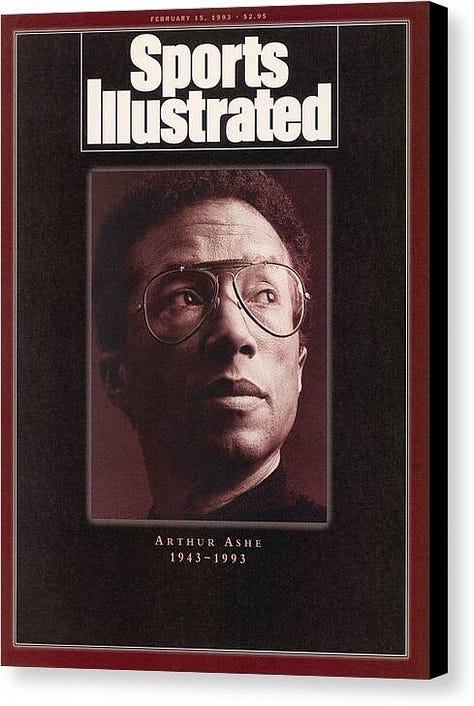
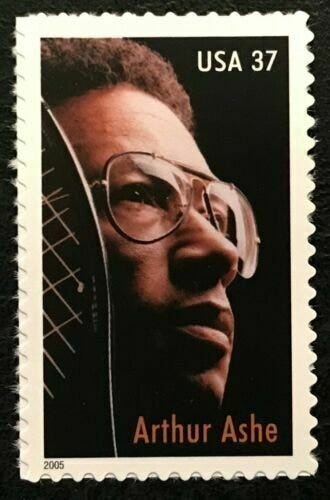
Those images of Ashe are etched in my memory. — not just because I worked on those issues. The images represent how I remember Ashe — as a thoughtful intellectual, a champion for social justice, a historian, and a humanitarian who was also quite good at tennis — the way Ashe wished to be remembered.
Previews and predictions for the ladies and gentlemen’s finals will be out later this week.
Iced Strawberry Latte
Breakfast at Wimbledon means strawberries and cream. The cream used over strawberries at Wimbledon is nothing like the thick whipped stuff we buy in grocery stores. It’s runny and closer to a soft, heavy cream.
What I love most about this coffee recipe is that it includes real strawberries instead of artificially flavored syrup. The recipe in the video calls for Mable syrup, but you can substitute honey or melt seedless all-fruit strawberry preserves to make a puree. Whether you prepare the puree with syrup or preserves, you’ll want to blend it into a smoothie-like texture.
What you’ll need.
Strawberries
Maple syrup, honey or seedless preserves.
Milk
Ice
2 ounces of cold brew or 2 shots of espresso (chilled).
Kazakhstan’s Russian Recruits Pay Off
Kazakhstan is in the house! Well, sort of.
Yulia Putintseva upset No. 1 Iga Swiatek in the third round. Putintseva is one of several Russian players representing Kazakhstan, including 2021 Wimbledon Champion Elena Rybankina.
Let me explain. Some billionaire decided he wanted Kazakhstan to be a tennis powerhouse. The only issue? Not many tennis greats there.
Enter Bulat Utemuratov, who reportedly invested over $100 million in building 38 tennis centers with 364 hard and clay courts in a nation with a population similar to the state of New York.
The Kazakhstan Tennis Federation trained 300 coaches and 500 instructors but needed inspiration and aspiration. That’s where the Russian players came in. Putintseva and Rybakina were recruited as juniors. Alexander Bublik started representing Kazakhstan in 2023. Bublik was already ranked in the Top 25 and reached the 2020 semifinals at the Australian Open, representing Russia.
In January, Alexander Shevchenko changed his nationality from Russian to Kazakhstan. With bans and restrictions placed on Russian athletes due to the Russian invasion of Ukraine, expect to see an increase in Kazakstanian tennis stars.
None of the tennis players who will represent Kazakstanian in the Olympics was born there.
Recruiting Russian players is paying off. The number of children playing tennis in Kazakhstan grew from 900 in 2007 to 30,000 in 2023.
Power Rankings: Who leaves Wimbledon with the most mojo?
Coffee Corner: Best espresso machines for every budget.
Podcast: Has NCAA tennis become the minor league for foreign players?








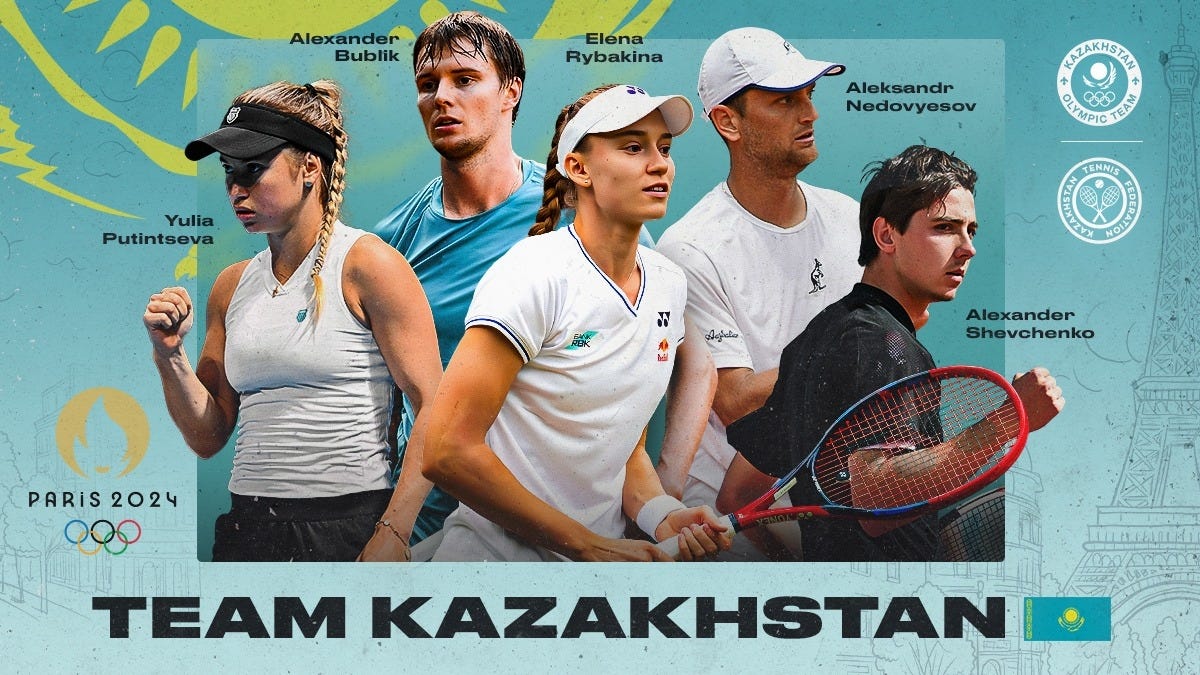

Beautiful article on Arthur Ashe
An excellent way to honor a legend. Now for coffee.